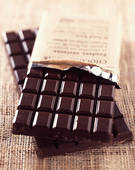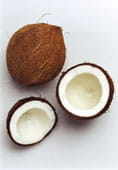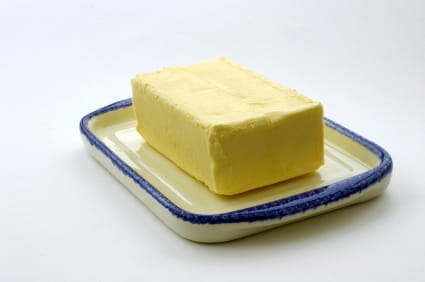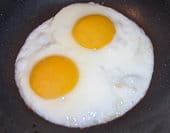
by Jamin Thompson
I’ve said it before and I’ll say it again – all diseases start in the gut.
If you have poor gut health (which usually begins with poor digestion) you will constantly feel run down and sick, your body will function at less efficient levels, and your risk of chronic disease increases significantly.
As discussed in previous posts, good digestion is critically important, not only your overall health but for your fat loss and muscle building efforts as well.
This goes without saying but it’s not what you eat that counts, but what you digest and absorb.
If you don’t absorb the nutrients from your food you’ll most likely end up with deficiencies and illness – plus it’s almost impossible to build muscle or burn fat if you aren’t absorbing the nutrients you eat.
Everything begins with digestion; from the second you put the food into your mouth, until the minute you poop it out at the end of the digestive process.
This is just my opinion but I believe gut health is arguably the most underrated yet single most important factor to your overall health and wellbeing.
I was sick for 3 years with what many doctors believed to be Crohn’s Disease. I had severe stomach inflammation as well as inflammation of the small intestine.
I had extreme nausea, vomiting, abdominal pain, cramps, and pooped like a fire hose every single day. I made countless trips to the emergency room for “extreme gastrointestinal distress” and all of the staff in that ER knew me on a first name basis. I really don’t know how to describe my symptoms but it was sort of like having food poisoning that never ever goes away…
The time I was sick was a very difficult period of my life. I suffered the effects of malabsorption, anorexia, and paranoia. I felt weak, helpless, and hopeless. I even had suicidal thoughts…
There are no other words to describe it other than “it sucked”.
The good news is that now I’m healthy and have an entirely new perspective on health and disease. Especially gut health and disease. I’ve seen and felt some of the worst kind of pain and suffering out there but that experience taught me a lot. I’ve learned from it and grown stronger.
Hopefully you will never have to get sick and learn the hard way (like I did) before you finally start doing the things you need to do to promote and enhance your own health and wellbeing. I used to think I was invincible, but nature showed me otherwise. That wake up call was a humbling experience. I don’t wish it upon anyone.
The tips I’m about to share with you played an integral part in my healing and recovery. I learned most of them when I was sick, and I still use them on a regular basis because they help keep me healthy – and my doctors hi fiving me at my annual checkup!
Note: some of the research that supports these tips isn’t 100% “scientifically proven”, so if you’re looking for a pharmacology report this is not it. Frankly, you will probably see mixed results when using these tips depending on your illness type, age, genetics, as well as other factors. These are just some basic digestion tips I used when I was extremely ill to help facilitate the healing process. They worked for me and I believe they can work for you as well (especially if you aren’t even sick).
Here are my ten simple tips that will help improve your digestion:
1. Chew your food well. Chewing is the first step of digestion and salivary amylase (an enzyme secreted in saliva), begins the process as you chew. Your food should be liquefied by chewing and thoroughly mixed with saliva before swallowing so that you give your food the best possible chance to be digested properly. A good rule of thumb is to “drink your food”.
2. Avoid drinking liquids with meals. Experts have argued that drinking liquids during meals can interfere with hydrochloric acid (HCl) levels and impede the digestion process. I prefer to avoid drinking liquids with meals, but if you must drink when you eat try to limit the quantity of liquids to 4 ounces or less of room temperature or warm liquids.
I recommend using warm water instead of cold water because cold water has been shown to slow digestion, reduce the concentration of stomach acid, and also cause cramps in sensitive individuals. So try to wait 45 minutes to an hour after eating before drinking large quantities of liquid or cold liquids.
The goal here is to allow your digestive juices and stomach acids to remain concentrated enough to digest your food completely and efficiently.
3. Avoid eating fruit with other foods. I know fruits are healthy but they should be eaten alone and not combined with any other food (unless you are hypoglycemic, in which case you should combine fruit with other food – balancing your blood sugar should be your primary focus).
Also, do not eat fruit immediately after a meal. I know fruit makes for a delicious healthy dessert but wait about an hour after your meal before you eat it. The reason is because the sugar in many fruits may start a fermentation process in the stomach and cause gas, bloating, and indigestion. If you have ever felt ‘fruit bloat’ or ‘fruit cramps’ you’ll know exactly what I mean.
4. Do not eat when stressed. Stress can wreak havoc on the digestive process…so try to always avoid eating when you are upset or angry…or even after a hard workout. Wait until you are calm, and at least 45 minutes to an hour after you workout before eating.
5. Use digestive enzymes. There are many different digestive enzymes that all perform specific tasks at various stages of the digestive process. From mouth enzymes (amylase), to the stomach enzymes (most notably, gastric amylase and pepsin), to the pancreatic enzymes (pancreatic amylase, protease, and lipase; which digest starches/carbohydrates, proteins, and fats respectively); these enzymes provide great aid to the digestive process and prepare the nutrients for absorption.
Unfortunately, many people suffer from ‘enzyme deficiency’ these days so I am a big proponent of digestive enzyme supplementation. My brand of choice is Digest Gold. It’s the best digestive enzyme supplement I’ve ever used and I’ve found it to help a great deal with the metabolism of carbohydrates, as well as fiber. Also, if you compare it to various other brands, you’ll notice it is slightly higher in active units of amylase, protease, lipase, as well as several other key ingredients.
Note: Digest Gold also includes cellulose, which the body does not make on its own. This enzyme is necessary for the proper digestion of fiber.
6. Use probiotics. Probiotics are the friendly bacteria that reside within the gastrointestinal tract. These little guys make the conditions inside the bowel extremely inhospitable for bad bacteria, inhibits their growth, and makes it easier for good bacteria to grow.
I like to think of them as the gut police – they monitor and control all potential harmful microorganisms within the body. As an added bonus, they have also been known to combat the effects of environmental pollutants and various other toxins.
There are three primary types of probiotics: Lactobacillus acidophilus (the most well known out of the group), which protects the colon; Lactobacillus bifidus, which protects the small intestine; and last but not least, Lactobacillus bulgaricus, which travels through the entire digestive system and supports the efforts of the other two.
I like to take probiotics in supplemental form (you can also find Lactobacillus bulgaricus in yogurt made from live cultures), and use them on a regular basis because I believe they provide numerous health benefits.
Note: when using Lactobacillus acidophilus, make sure the supplement contains at least 200 million organisms per cubic centimeter. Clinical evidence shows that this probiotic needs to be taken in large doses in order to be effective.
Note: It usually requires approximately one month of proper probiotic supplementation in order for natural gut floral to return to optimal levels.
Note: It may be helpful to supplement with probiotics following a cycle of antibiotics as antibiotics destroy bad AND good bacteria which can leave you vulnerable for proliferation by other microorganisms at the end of your cycle.
Note: Various over-the-counter medications (pain killers, antacids, etc) have been shown to have negative effects on the friendly Lactobacillus bacteria in the gut.
7. Maintain a healthy gut flora balance. I have been researching and studying gut health for over ten years now and I’ve come to the conclusion that an optimal floral balance level is roughly 85% friendly bacteria and 15% unfriendly bacteria. Some experts and doctors may agree or disagree, this is just my opinion based on (1) my own experience with IBD (2) my own research (3) basic scientific logic.
There are quite a few tests you can do to test various gastrointestinal functions and levels and I had several of them done when I was sick. These tests typically cost several hundred bucks or so and unless you are really sick, you probably don’t need to go that route. Plus, many of the labs you’ll find online that do testing are less than reputable, so if you decide to go the testing route always do it under a doctor’s supervision and be sure to triple check sources.
Here are a few sample lab reports: (Sample Report 1 | Sample Report 2) *these are just examples, I’m not endorsing these companies*
Here’s a free method of ‘testing’ your gut flora health at home: If you’re chronically sick, have allergies, rashes, frequent headaches, are chronically fatigued, experience chronic constipation/diarrhea or a mix of both, regularly take antacids or are on antibiotics, or have any other weird chronic aliment, there is a good chance you may have a gut flora imbalance and need to begin probiotic supplementation.
Note: It is extremely difficult to restore gut flora using diet alone. Studies have shown that it takes approximately one year on a new diet to produce any type of noticeable change in flora.
8. Keep bowel transit time on point. We have all experienced constipation at some point and it is typically considered to be a ‘minor medical event’. However, I have witnessed the effects of severe constipation first hand and trust me…it wasn’t pretty. I was lying in my hospital bed receiving anti-nausea medicine and a woman in the bed next to me was howling with blood curdling screams. I asked the nurse what the woman was suffering from and she said “she is severely constipated”. I’ll never forget that.
I honestly believe the long term effects of chronic constipation can be deadly – and I do remember one of my Gastroenterologists referring to it as the “modern plague”.
The negative effects of slow transit time and constipation are numerous: autointoxication, increased workload of excretory organs, slowed cellular metabolism, functional decline in cellular activity, increased acute and chronic illness predisposition, pain, fatigue, and even some cancers.
Having seen countless GI specialists in my day, I’ve found that many physicians believe normal bowel elimination/transit time to be anywhere from two to fourteen times per week (roughly 36-72 hours after each meal). I disagree. I believe optimal transit times should be around 20-24 hours – and if you are eating 5-6 meals per day you should shoot for around 18 hours.
If you only poop once a day, for example, the colon can contain the residue from those six full meals. On the other hand, if you poop less than once per day, the colon can hold up to 9 meals or more and you’ll begin suffering the effects of chronic constipation.
The longer food resides in the bowel, the higher probability intestinal flora will be altered, toxic substances will form, and intestinal toxemia will result. I like to keep my transition time on point by eating lots of natural organic fruits and veggies, and using a fiber supplement. My daily fiber goal is between 25-30 grams and I use this supplement to help support my efforts.
9. Use bitter herbs. Research has shown that ‘bitters’ can help increase the gastric secretions of the stomach and produce digestive enzymes – this is believed to help break down and digest food. I’ve found that bitters are also a fairly effective digestive aid when consumed before eating large meals.
Examples of bitters are: angelica, chamomile, cinnamon, dandelion, fennel, gentian, ginger, goldenseal, milk thistle, peppermint, and rue.
Note: Although certain herbs are thought to have stomachic effects, the therapeutic value based on modern pharmacology isn’t quite clear. I’ve seen great results personally from using these herbs, but since this isn’t actual medicine your results will vary.
10. Practice intermittent fasting. The digestion process requires a ton of energy and is quite stressful on the body. The more meals you eat each day the more stress you place upon your digestive system each day – so sometimes it is a good idea to just give your system a rest and fast.
I know many people are afraid to fast because popular bodybuilding and fitness culture has conditioned everyone to think that “if you miss meals, you’ll enter starvation mode and lose all your muscle”. There is strong scientific evidence out there that refutes this notion, and some studies have even shown that metabolic rate can remain constant for up to 90 hours during a fast before declining.
When I was sick, my doctors advised me to spread my meals out 4-5 hours because (1) an increased meal frequency would place additional stress on my digestive system and not allow it to heal; and (2) the human digestive system is not designed to efficiently digest and assimilate food at that rate of consumption. Don’t get me wrong…the human body is definitely CAPABLE of eating that often, it just isn’t healthy, necessary, or in your best interest.
Fasting will give your digestive system a much needed break, allow the liver to detox, and help the body heal itself.

![antiox-chart[1] Antioxidants](https://news.menshealth.com/wp-content/uploads/2012/04/antiox-chart1-250x300.jpg)
 1. Super Dark Chocolate (at least 72% cacao content or higher) – It might not be a secret anymore, but yes, dark chocolate (NOT milk chocolate) can be a very healthy food, even though it is technically calorie dense.
1. Super Dark Chocolate (at least 72% cacao content or higher) – It might not be a secret anymore, but yes, dark chocolate (NOT milk chocolate) can be a very healthy food, even though it is technically calorie dense. 2. Coconut milk, coconut flour, and coconut oil — Coconut milk and oil are great sources of a super healthy type of saturated fat called medium chain triglycerides (MCTs), including a component called lauric acid, which is a powerful nutrient for your immune system, and is lacking in most western diets. In addition, MCTs are readily used for energy by the body and less likely to be stored as bodyfat compared to other types of fats.
2. Coconut milk, coconut flour, and coconut oil — Coconut milk and oil are great sources of a super healthy type of saturated fat called medium chain triglycerides (MCTs), including a component called lauric acid, which is a powerful nutrient for your immune system, and is lacking in most western diets. In addition, MCTs are readily used for energy by the body and less likely to be stored as bodyfat compared to other types of fats. 3. Grass-fed (pasture-raised) butter — yes, delicious smooth and rich BUTTER (real butter, not deadly margarine!)… It’s delicious, contains loads of healthy nutritional factors, and does NOT have to be avoided in order to get lean. In fact, I eat a couple pats of grass-fed butter daily and maintain single digit bodyfat most times of the year.
3. Grass-fed (pasture-raised) butter — yes, delicious smooth and rich BUTTER (real butter, not deadly margarine!)… It’s delicious, contains loads of healthy nutritional factors, and does NOT have to be avoided in order to get lean. In fact, I eat a couple pats of grass-fed butter daily and maintain single digit bodyfat most times of the year. 4. Whole Eggs, including the yolk (not just egg whites) — Most people know that eggs are one of the highest quality sources of protein. However, most people don’t know that the egg yolks are the healthiest part of the egg… that’s where almost all of the vitamins, minerals, and antioxidants (such as lutein) are found in eggs.
4. Whole Eggs, including the yolk (not just egg whites) — Most people know that eggs are one of the highest quality sources of protein. However, most people don’t know that the egg yolks are the healthiest part of the egg… that’s where almost all of the vitamins, minerals, and antioxidants (such as lutein) are found in eggs. 5. Grass-fed beef or bison (NOT the typical grocery store beef!) — I know most people think that red meat is unhealthy for you, but that’s because they do not understand how the health of the animal affects how healthy the meat is for consumption. Keep this in mind — “an unhealthy animal provides unhealthy meat, but a healthy animal provides healthy meat”.
5. Grass-fed beef or bison (NOT the typical grocery store beef!) — I know most people think that red meat is unhealthy for you, but that’s because they do not understand how the health of the animal affects how healthy the meat is for consumption. Keep this in mind — “an unhealthy animal provides unhealthy meat, but a healthy animal provides healthy meat”. On the other hand, grass-fed beef from cattle and buffalo (or bison) that were raised on the type of natural foods that they were meant to eat in nature (grass and other forage), have much higher levels of healthy omega-3 fats and lower levels of inflammatory omega-6 fats (that most people already eat way too much of) compared to grain fed beef or bison.
On the other hand, grass-fed beef from cattle and buffalo (or bison) that were raised on the type of natural foods that they were meant to eat in nature (grass and other forage), have much higher levels of healthy omega-3 fats and lower levels of inflammatory omega-6 fats (that most people already eat way too much of) compared to grain fed beef or bison. 6. Avocados — Even though avocados are typically thought of as a “fatty food”, they are chock full of healthy fats! Not only is this fruit (yes, surprisingly, avocados are actually a fruit) super-high in monounsaturated fat, but also chock full of vitamins, minerals, micro-nutrients, and antioxidants.
6. Avocados — Even though avocados are typically thought of as a “fatty food”, they are chock full of healthy fats! Not only is this fruit (yes, surprisingly, avocados are actually a fruit) super-high in monounsaturated fat, but also chock full of vitamins, minerals, micro-nutrients, and antioxidants. 7. Nuts: Walnuts, Almonds, Pistachios, Pecans, Brazil Nuts, Macadamias, etc — Yes, this is yet another “fatty food” that can actually help you burn belly fat! Although nuts are generally between 75-90% fat in terms of a ratio of fat calories to total calories, this is another type of food that is all healthy fats, along with high levels of micronutrients such as vitamins, minerals, and antioxidants. Nuts are also a good source of fiber and protein, which of course, you know helps to control blood sugar and can aid in fat loss.
7. Nuts: Walnuts, Almonds, Pistachios, Pecans, Brazil Nuts, Macadamias, etc — Yes, this is yet another “fatty food” that can actually help you burn belly fat! Although nuts are generally between 75-90% fat in terms of a ratio of fat calories to total calories, this is another type of food that is all healthy fats, along with high levels of micronutrients such as vitamins, minerals, and antioxidants. Nuts are also a good source of fiber and protein, which of course, you know helps to control blood sugar and can aid in fat loss.